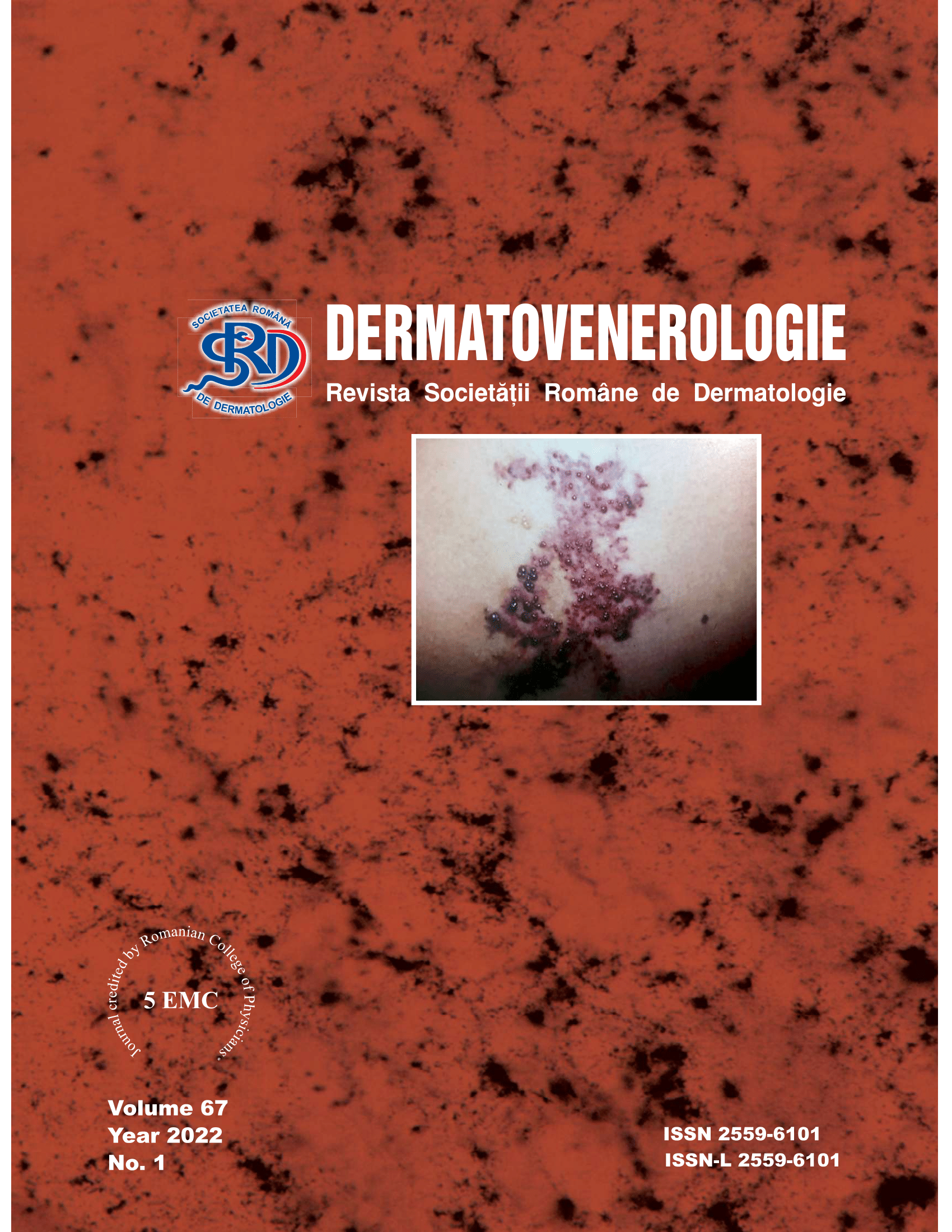Summary
Dermatofibrosarcoma protuberans is a very rare tumor, but it is considered the most common skin sarcoma. It originates in the dermis and tends to infiltrate underlying structures. Due to a high rate of misdiagnosis, it is usually discovered with local invasions, but metastases are rare. Wide local excision and adjuvant therapies such as Imatinib (Tyrosine Kinase Inhibitor) are used to both prevent and limit recurrences. Long term follow-up is strongly recommended.
We present the case of a 51-year-old man who presented with multiple atypical nevi. The patient was diagnosed with dermatofibrosarcoma protuberans and mediastinal adenopaties seven years ago. The primary lesion was excised and he was prescribed chemotherapy with Paclitaxel and Carboplatin. Subsequent, he was diagnosed with a dermatofibrosarcoma protuberans pulmonary metastasis with fibrosarcomatous development, thus beginning treatment with Imatinib. From the patients`s history, he was also diagnosed with in situ melanoma on the back which was excised, developed after initiating the treatment with Imatinib.
Patients with fibrosarcomatous dermatofibrosarcoma protuberans may need adjuvant therapy such as Imatinib in order to avoid a possible recurrence or to treat metastases.
Dysplastic nevi proliferation may be associated with Imatinib therapy. Therefore, regular follow-ups are required in order to monitor both dermatofibrosarcoma protuberans recurrences, as well as atypic nevi at a patient with history of melanoma.


